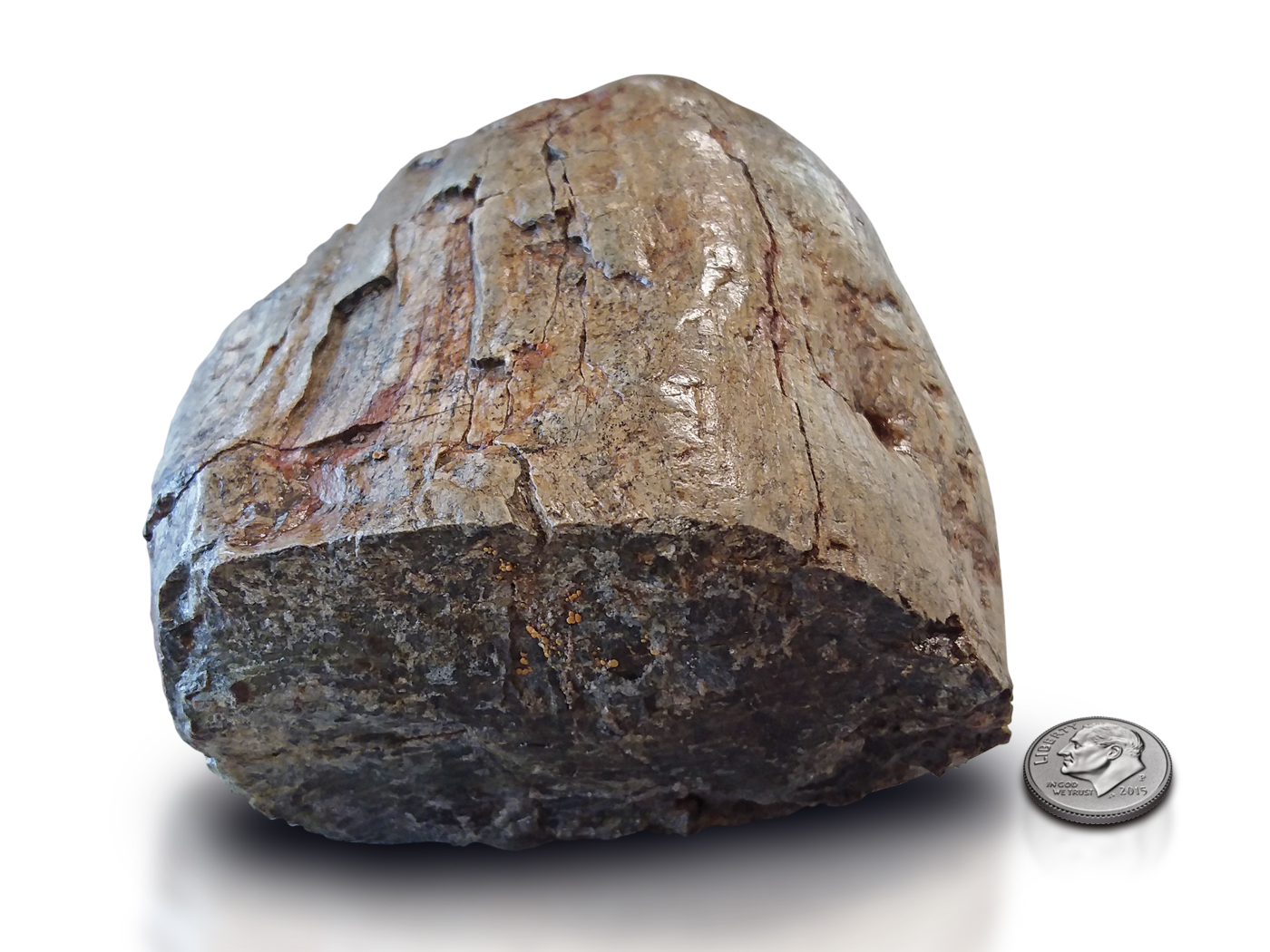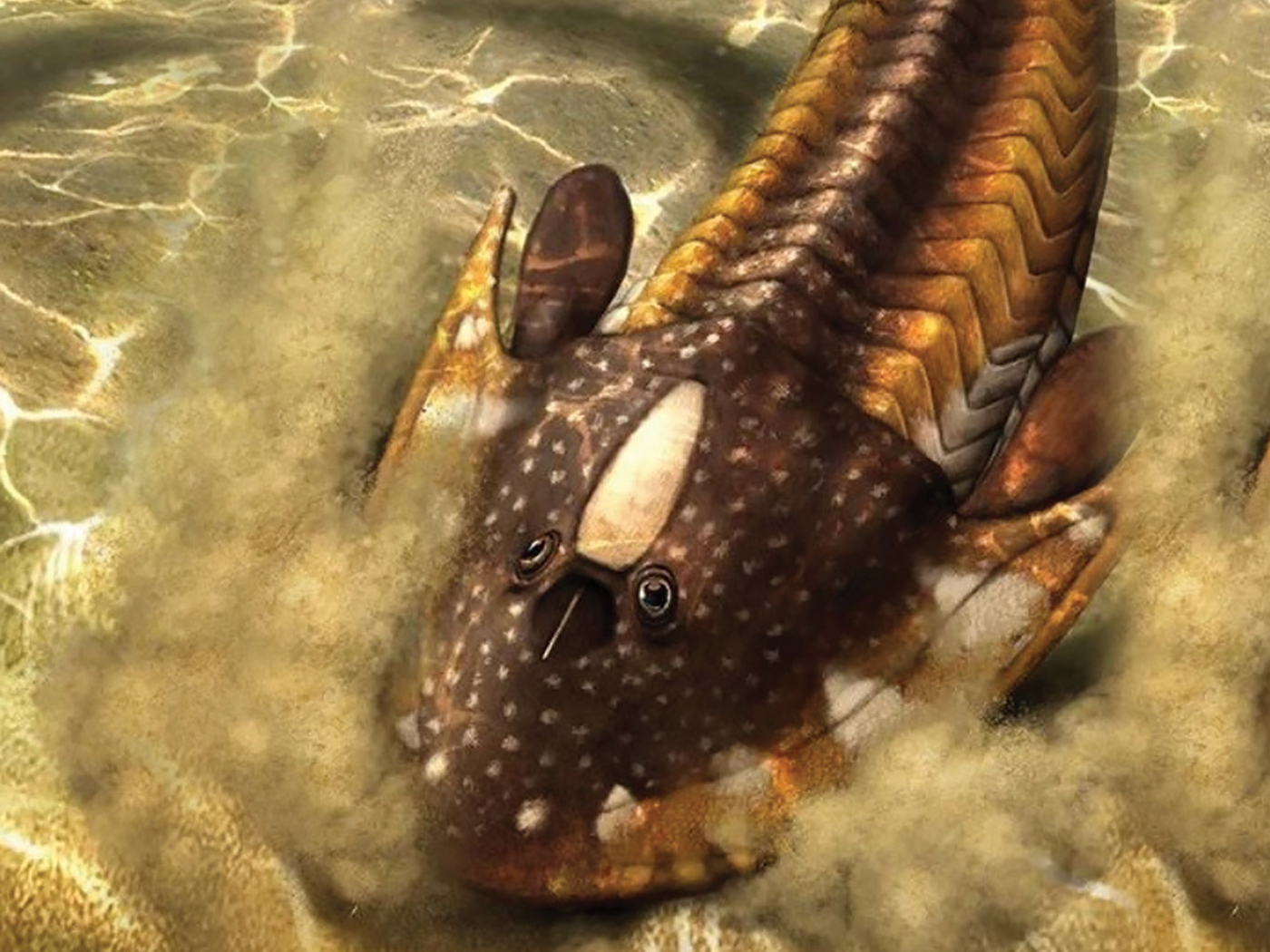Amateur fossil hunters Jamie and Jonathan Hiscocks were looking for dinosaur remains in East Sussex, UK, when they instead found tiny spider webs trapped inside a piece of ancient amber. Oxford University paleobiologist Martin Brasier inspected the amber, which was assigned an age of over 100 million years. He concluded that spiders back then were able to spin webs just like today’s garden spiders.
The amber-encased webbing formed concentric circles like those that contemporary orb-weaver spiders manufacture. Also evident were “little sticky droplets along the web threads to trap prey,” Brasier told the Daily Mail. He added, “You can match the details of the spider's web with the spider's web in my garden.”1 In a paper recently published in the Journal of the Geological Society, he wrote that these webs are “comparable with those of araneoid spider webs studied by us in modern cherry tree resins.”2
Brasier and his colleagues suggested that this “amber was arguably deposited shortly before the emergence of the earliest flowering plant communities circa 140 million years before present.”2 The Daily Mail reported, “The discovery suggests that orb-shaped web spinning spiders existed far earlier than had been previously thought, at a time before flowering plants appeared on the planet and triggered an explosion in flying insects.”1
This is a reversal of the standard story of spider evolution, which was based on spider fossils from Florissant lake deposits and Baltic amber. Paleobiologist Donald Prothero wrote in 2004, “From these deposits, it is apparent that carnivorous, web-spinning spiders had radiated since the late Mesozoic, probably in response to the explosion of insect diversity in response to the diversification of flowering plants.”3 Florissant insect fossils are considered to be 35 million years old , and the oldest Baltic amber is considered to be about 40 million years old. Thus, by evolutionary reckoning, the new UK amber shows that spiders were around 100 million years earlier than previously thought.
So, did orb-weaving spiders evolve in response to a greater diversity of insects―which supposedly evolved in response to plants―or did the spiders evolve prior to these insects?
If the evolutionary age-deposit correlation is made, this amber-encased spider web not only falsifies the theory that spiders “radiated” in response to the “explosion” of insects, but it also glosses over the fact of the interdependence of these three groups—spiders, insects, and flowering plants—in ecosystems. Most orb-weavers depend entirely on flying insects for food, insects are responsible for pollinating most flowering plants, and the plants provide the necessary food for most insects.
For Brasier and his colleagues to maintain that even a single generation of these spiders evolved prior to insects, they must also insist that spiders came up with silk glands, spinnerettes, and the instincts required to build symmetrical webs even to the degree of coating them with sticky insect-trapping droplets—all with no flying insects around to trap as prey. With no lunch as a payoff, wouldn't that generation of spiders have gone extinct?
However, if the contradictory web of long-age assignments could be decoupled from rock layers, as the Flood model maintains, then the spider conundrum vanishes. Spider, insect, and flowering plant fossils are near the top layers of Flood-year strata not because they evolved in later eras, but because they were part of mid-continental ecosystems that were the last areas to be inundated by the Flood.4
Genesis is correct that spiders, insects, and flowering plants have always existed in interdependent ecosystems from the beginning.
References
- Creepy crawlies from the dawn of time: Newly-discovered prehistoric spider’s web is world’s oldest. Daily Mail. Posted on dailymail.co.uk November 1, 2009, accessed November 3, 2009.
- Brasier, M., L. Cotton and I. Yenney. 2009. First report of amber with spider webs and microbial inclusions from the earliest Cretaceous (c. 140 Ma) of Hastings, Sussex. Journal of the Geological Society. 166 (6): 989-997.
- Prothero, D. 2004. Bringing Fossils to Life: An Introduction to Paleobiology, 2nd ed. Boston, MA: McGraw-Hill, 266.
- Wise, K. 2003. The Pre-Flood Floating Forest: A Study in Paleontological Pattern Recognition. Proceedings of the Fifth International Conference on Creationism. Pittsburgh, PA: Creation Science Fellowship, 371-381.
* Mr. Thomas is Science Writer at the Institute for Creation Research.
Article posted on November 20, 2009.












